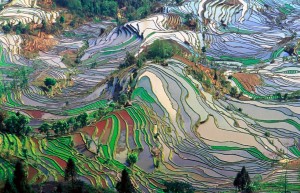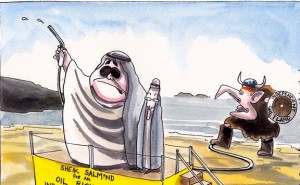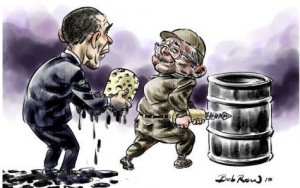Can ten countries with different cultures, traditions, languages, political systems, and levels of economic development act in concert to expand their collective potential? That is the question with which the Association of Southeast Asian Nations (ASEAN) has been wrestling for decades. Judging by their leaders’ ambitious vision for cooperation, the answer may be yes.
What began as a straightforward push to reduce trade tariffs has evolved into a blueprint for a dynamic open market of 600 million consumers and a production base that can compete directly with the world’s largest economies.
Taken together, the group’s members – Brunei, Cambodia, Indonesia, Laos, Malaysia, Myanmar, the Philippines, Singapore, Thailand, and Vietnam – would comprise the world’s seventh-largest economy. Moreover, ASEAN’s international trade has almost tripled over the last decade.
The AEC plan aims to build on this momentum by removing barriers to the movement of goods, services, capital, and people throughout the region. The ASEAN countries could gain $280-625 billion in annual GDP by 2030.
Part of that growth stems from encouraging local companies to expand beyond their home markets.
ASEAN’s quest to become a unified market is far from complete. While average tariff rates in the original five member states (Indonesia, Malaysia, the Philippines, Singapore, and Thailand) have been virtually zero since 2010, some barriers must still be dismantled.
Though full integration appears unlikely by ASEAN’s target date of 2015, lately the effort has been imbued with a renewed sense of urgency. As wages in China rise, Southeast Asian economies have a window of opportunity to become the next “factories to the world.”
Of course, competing on the basis of low wages alone would be inadequate to raise living standards in the long term. ASEAN will also need to compete on productivity – an area in which countries like Cambodia, Indonesia, and Vietnam are currently at a disadvantage. Excluding Singapore and Brunei, average labor productivity in ASEAN remains about 40% lower than in China.
For ASEAN to become a real manufacturing powerhouse, its lower-income economies will need to focus on modernizing equipment and processes and building their workforces’ skills. They must also increase – and sustain – investment to address glaring infrastructure gaps and bring down high logistics costs.
Some critics insist that, even with such efforts, ASEAN members vary too widely in terms of their level of economic development to create a smoothly functioning single entity. But ASEAN, unlike the European Union, is not attempting to form a monetary union.
In fact, ASEAN’s focus on trade makes diversity an advantage, as companies seek to benefit from low-cost labor in some countries and intermediate manufacturing capabilities in others, all while gaining access to one of the world’s most sophisticated financial and logistics centers.
ASEAN’s lower-income economies have expressed concern that they will miss out on many of the benefits of deeper integration. But this does not have to be the case. Mexico, for example, has arguably enjoyed greater economic benefits from the North American Free Trade Agreement than the United States or Canada has.
ASEAN governments must urge businesses to expand into neighboring markets. Here, removing a handful of key administrative barriers could go a long way.
As it stands, restrictions on foreign investment and trade barriers continue to shield many domestic industries from competitive pressures. Now, ASEAN countries must decide whether to retreat into protectionism or reaffirm their commitment to a more open approach.
As a regional grouping, ASEAN does not have the kind of deep institutional ties and infrastructure links that bind together the EU’s members. Nor has it built the kind of seamless supply chains that funnel massive trade flows through North America. But, if ASEAN can execute the vision outlined in the AEC plan, it could exceed the sum of its parts.















